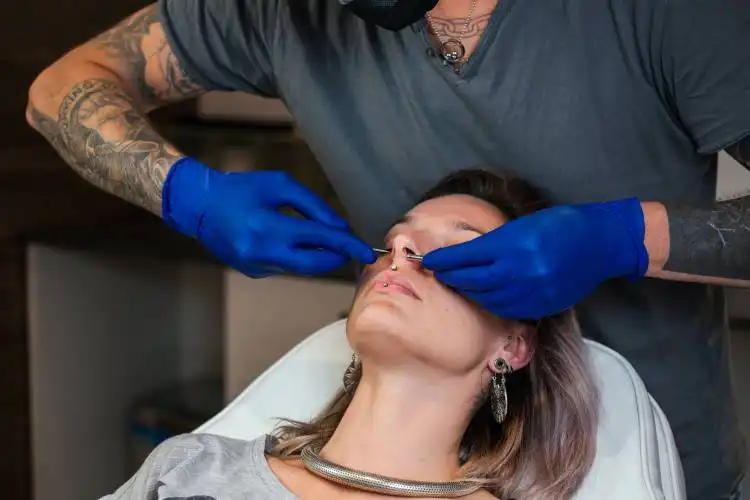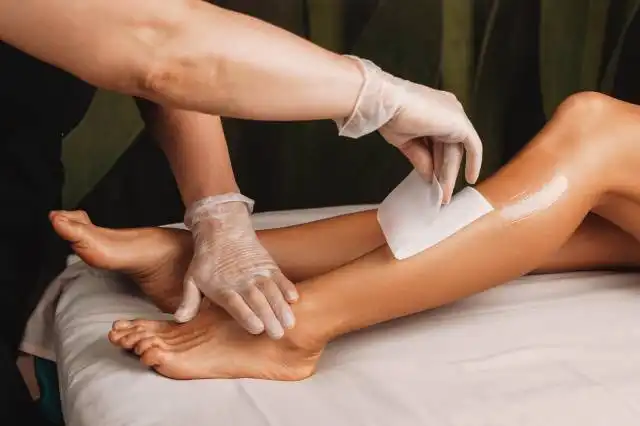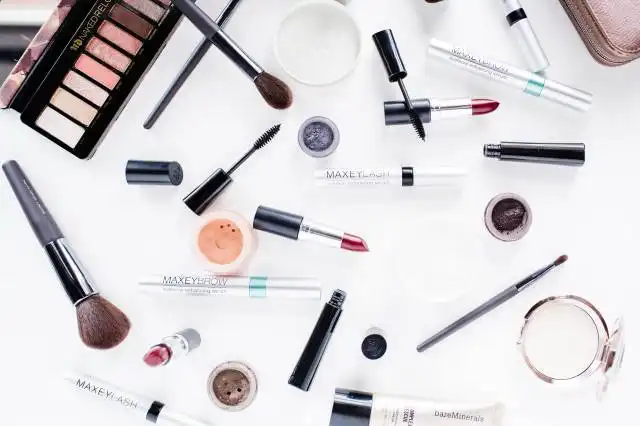Start a Makeup Business
Becoming a Fairy Godmother: Turning a Passion for Cosmetics into a Thriving Business
| Updated


MAKEUP BUSINESS
Get your glam on with a makeup business! This enterprise essentially encompasses selling beauty products, offering makeup application services or even starting your own cosmetic line. This niche offers a beautiful opportunity to not only spread the magic of cosmetics but also build a loyal customer base who adore your products. Help people feel confident and bright every day, because as they say, beauty might just be skin deep, but a little mascara never hurts!
Jump to Business Plan
RELATED BUSINESS IDEAS
Browse ALL Health & Beauty Innovations Business Ideas
Discover Your Perfect Domain
Unlock the door to your online success with our hand-picked selection of premium domain names. Whether you're starting a new venture or rebranding an existing one, the right domain can set the tone for your digital presence. Browse through our curated list, each with its unique potential to enhance your brand's visibility and credibility.
MAKEUP MINI BUSINESS PLAN
This a quick reality check to help you identify the strengths and weaknesses of your business concept before you dive in.
Expected Percent Margin:
- Gross Margin: 60-70%
- Net Profit Margin: 15 - 25%
Earnings Expectations:
- Daily Earnings: $300 - $600
- Weekly Earnings: $2100 - $4200
- Monthly Earnings: $9000 - $18000
- Annual Earnings: $108000 - $216000
Actions to Hit Those Numbers:
Product Range and Sourcing:
- Initial Investment: Around $30,000-$60,000 for a diverse and quality product range.
- Supplier Network: Establish relationships with 3-5 reliable cosmetics manufacturers or wholesalers.
Marketing and Customer Acquisition:
- Social Media: Post daily on Instagram, Facebook, and other platforms popular with your target demographic.
- PR and Blogger Outreach: Send PR packages to beauty bloggers and influencers for promotional posts.
Sales and Customer Experience:
- In-store Experience: Design an appealing store layout for customers and offer in-store makeup services.
- Fantastic Customer Service: Employ a friendly, helpful and knowledgeable team.
Cost Management:
- Rent: Choose a location where rent is less than 10% of expected monthly sales.
- Utilities and Maintenance: Budget around $400 - $800 per month.
Business Operations:
- Opening Hours: Open at least 6 days a week, 8-12 hours a day.
- Transaction Volume: Aim for 15 - 30 transactions per day, with an average sale price of $50 - $100.
Remember, these are rough estimations. The actual values can vary based on location, competition, and the specific strategies you incorporate into your business. Always consult with a business advisor or financial consultant to get personalized advice for your business.
NOT WHAT YOU HAD IN MIND? Here are more ideas



Browse ALL Health & Beauty Innovations Business Ideas
Grab Your Business Website Name
Before you get caught up in the whirlwind of setting up your business, invest in a domain name. It's a small but significant step that lays the foundation for your brand and makes it easier for customers to find and trust you. Just like you wouldn't build a house without securing the land first, don't build a business without securing your domain name.
"Why? Can't that wait?" Here's why it shouldn't
Step 1: Determine if a Makeup Business is Right for You
Breakdown of Startup Expenses
Before starting a makeup business, it is important to understand the startup costs associated with this endeavor. This includes the cost of supplies such as makeup, brushes, and other tools, as well as any necessary licenses or permits. Additionally, you will need to consider the cost of renting a space, if necessary, as well as any advertising or marketing expenses. It is important to research the costs associated with starting a makeup business in your area to ensure that you have a realistic understanding of the financial commitment.
Breakdown of Ongoing Expenses
Once you have started your makeup business, there are ongoing expenses to consider. This includes the cost of restocking supplies, as well as any rent or utilities associated with the space you are using. Additionally, you will need to consider the cost of advertising and marketing, as well as any other costs associated with running your business. It is important to understand the ongoing expenses associated with your makeup business to ensure that you can sustain your business in the long-term.
Examples of Ways to Make Money
There are many ways to make money with a makeup business. You can offer services such as makeup application, makeup lessons, and makeup parties. Additionally, you can sell makeup products such as makeup kits, makeup brushes, and other tools. You can also offer makeup classes or workshops to teach others how to apply makeup. It is important to research the different ways to make money with a makeup business to ensure that you are taking advantage of all available opportunities.
Step 2: Name the Business
Naming a business can be a difficult task, but it is important to get it right. It should be something that reflects the business and is easy to remember. It should also be something that is not already taken, so it is important to do a thorough search of the internet and business registries to make sure the name is available. Additionally, it can be helpful to brainstorm with friends and family to come up with ideas. It is also important to consider the domain name and the social media handles associated with the business name. If the desired name is taken, it is important to come up with a variation that is still reflective of the business.
Step 3: Develop a Business Plan
A business plan is an essential document for any business, and a makeup business is no exception. It should include an executive summary, a description of the business, a market analysis, an organizational plan, a financial plan, and a description of the products and services offered. The executive summary should provide a brief overview of the business and its goals. The description of the business should include the type of business, the target market, the competitive landscape, and the strategies for success. The market analysis should include an analysis of the makeup industry, the target market, and the competitive landscape. The organizational plan should include the management structure, the staffing plan, and the operational plan. The financial plan should include a budget, a cash flow statement, and a break-even analysis. Finally, the description of the products and services offered should include a detailed description of the products and services, the pricing structure, and the marketing plan.
Step 4: Obtain Licenses and Permits
Types of Licenses and Permits Needed
In order to start a makeup business, there are certain licenses and permits that must be obtained. Depending on the type of business, the location, and the services offered, the licenses and permits required may vary. Generally, businesses will need to obtain a business license, a tax identification number, and any other local or state permits that may be required. In addition, businesses may need to obtain a license to use any copyrighted or trademarked materials, and a license to use any special equipment or products. Finally, businesses may need to obtain a license to use any special makeup techniques or products.
Step 5: Find a Location
Considerations for Finding a Location
Finding a suitable location for a makeup business is an important step in the process. When looking for a location, businesses should consider the size and layout of the space, the cost of rent, the proximity to potential customers, and the availability of parking. Businesses should also consider the local zoning regulations and any other restrictions that may be in place. Finally, businesses should consider the accessibility of the location and whether it is easily accessible by public transportation.
Step 4: Register the Business
Registering the business is an important step in starting a makeup business. The first step is to determine the type of business entity that best suits the business. This could be a corporation, limited liability company, or sole proprietorship. Each type of business entity has different requirements and benefits.
Once the type of business entity is determined, the business must register with the state. This is done by filing the necessary paperwork with the Secretary of State. The paperwork will include the business name, address, and other information. Additionally, the business may need to obtain a business license or permit depending on the state.
After the business is registered, the business must obtain an Employer Identification Number (EIN) from the Internal Revenue Service (IRS). The EIN is used to identify the business for tax purposes. The business must also register with the state’s Department of Revenue to obtain a state tax ID number.
The business must also register with the state’s Department of Labor to obtain a state unemployment insurance number. This number is used to pay unemployment insurance taxes. Additionally, the business may need to register with the state’s Department of Health to obtain a health permit if the business will be selling cosmetics.
Finally, the business must register with the state’s Department of Insurance to obtain a liability insurance policy. This policy will protect the business from any legal liabilities that may arise from the business operations.
Step 5: Obtain Licenses and Permits
Before starting a makeup business, it is important to obtain the necessary licenses and permits. Depending on the state or country, the types of licenses and permits needed may vary. For example, in the United States, a business license and a sales tax permit may be required. Additionally, a cosmetology license may be needed in order to practice makeup services. It is important to research the local laws and regulations to determine the specific licenses and permits required.
Obtaining Licenses and Permits
Once the necessary licenses and permits have been identified, the next step is to obtain them. This can be done by visiting the local government office or website. Depending on the type of license or permit, there may be an application fee. Additionally, the application process may require submitting documents such as proof of identity, proof of address, and proof of business registration. Once the application is submitted, it may take several weeks to receive the license or permit.
Maintaining Licenses and Permits
Once the licenses and permits have been obtained, it is important to maintain them. This may involve renewing the license or permit on a regular basis. Depending on the type of license or permit, there may be a renewal fee. Additionally, the renewal process may require submitting documents such as proof of identity, proof of address, and proof of business registration. It is important to keep track of the expiration dates for the licenses and permits and to renew them in a timely manner.
Benefits of Obtaining Licenses and Permits
Obtaining the necessary licenses and permits is beneficial for a makeup business. It helps to ensure that the business is operating legally and that the makeup services are being provided in accordance with local laws and regulations. Additionally, having the necessary licenses and permits may help to build trust with customers and make the business more attractive to potential customers.
Step 6: Open a Business Bank Account
Opening a business bank account is an important step for any business. It allows you to keep your business finances separate from your personal finances. To open a business bank account, you will need to provide the bank with your business name, address, and contact information. You will also need to provide proof of your business's legal status, such as a business license or articles of incorporation. Additionally, you may need to provide a copy of your business plan and/or a copy of your business's tax returns.
Benefits of Opening a Business Bank Account
Opening a business bank account offers several benefits to business owners. First, it allows you to keep your business finances separate from your personal finances. This makes it easier to track expenses and income, as well as to prepare financial statements. Additionally, it allows you to take advantage of special banking services, such as merchant services, business credit cards, and business loans. Finally, it can help to protect your personal assets from business liabilities.
Tips for Choosing a Bank
When choosing a bank for your business, there are several factors to consider. First, you should look for a bank that offers the services you need, such as merchant services, business credit cards, and business loans. You should also consider the fees associated with the account, such as monthly fees and transaction fees. Additionally, you should look for a bank that offers convenient access, such as online banking and mobile banking. Finally, you should look for a bank that offers excellent customer service.
Step 7: Set Up Accounting
When starting a makeup business, it is important to set up an accounting system to track income, expenses, and profits. There are many accounting software options available, such as QuickBooks, Xero, and FreshBooks. Each of these programs have their own advantages and disadvantages, so it is important to research each one to determine which one is best for your business.
Hiring an Accountant
In addition to setting up an accounting system, it is also important to consider hiring an accountant to help manage your finances. An accountant can help with filing taxes, tracking expenses, and creating financial statements. They can also provide valuable advice on how to manage your finances and maximize profits.
Setting Up a Bank Account
Once you have chosen an accounting system and hired an accountant, it is important to set up a bank account for your business. This will allow you to easily track expenses and income and make sure that your business is operating within the law. It is important to choose a bank that offers competitive interest rates and fees.
Setting Up a Payment System
Finally, it is important to set up a payment system for your business. This can include setting up a merchant account with a payment processor, such as PayPal or Stripe, or setting up a payment system with a credit card processor. This will allow customers to easily pay for your services. It is important to research the different payment systems available and choose one that is secure and reliable.
Step 8: Market the Business
Marketing is a key component of any business, and a makeup business is no different. To successfully market your business, you need to understand the different types of marketing strategies available to you. These can include traditional marketing strategies such as print ads, radio ads, and television ads, as well as digital marketing strategies such as social media, email campaigns, and search engine optimization. It is important to understand the different types of marketing strategies and how they can be used to reach your target audience.
Develop a Marketing Plan
Once you have a better understanding of the different types of marketing strategies, it is important to develop a marketing plan. This plan should include a budget for each type of marketing strategy, as well as a timeline for when each strategy should be implemented. It is also important to consider the target audience for each strategy and how to best reach them.
Utilize Social Media
Social media is a great way to reach a large audience and to build relationships with potential customers. It is important to create a social media presence on the most popular platforms, such as Facebook, Instagram, Twitter, and YouTube. It is also important to post regularly and to engage with followers in order to build relationships and to promote the business.
Utilize Influencers
Influencers are people who have a large following on social media and can be used to promote your business. It is important to find influencers who are a good fit for your business and to create a mutually beneficial relationship with them. This can include offering discounts or free products in exchange for them promoting your business.
Utilize Traditional Advertising
Traditional advertising, such as print ads, radio ads, and television ads, can be a great way to reach a large audience. It is important to create ads that are creative and memorable and to target the right audience. It is also important to consider the cost of traditional advertising and to make sure it fits within your budget.
Step 9: Set Up an Online Store
When setting up an online store, there are a variety of platforms to choose from. Popular platforms include Shopify, WooCommerce, and Magento. Each platform has its own advantages and disadvantages, so it is important to research each one before making a decision. For example, Shopify is a great choice for businesses that don’t have a lot of technical knowledge, as it is easy to use and has a wide range of features. WooCommerce is a great choice for businesses that need more customization options, as it is open source and allows for more flexibility. Finally, Magento is a great choice for businesses that need more advanced features, as it is highly customizable and has a wide range of features.
Setting Up Payment Processing
Once you have chosen a platform, the next step is to set up payment processing. This can be done through a variety of payment processing services, such as PayPal, Stripe, and Square. Each service has its own advantages and disadvantages, so it is important to research each one before making a decision. For example, PayPal is a great choice for businesses that need a simple and secure payment processing solution, as it is easy to set up and use. Stripe is a great choice for businesses that need more customization options, as it is highly customizable and allows for more flexibility. Finally, Square is a great choice for businesses that need more advanced features, as it offers a wide range of features and is easy to set up.
Setting Up Shipping and Fulfillment
Once you have set up payment processing, the next step is to set up shipping and fulfillment. This can be done through a variety of services, such as USPS, UPS, and FedEx. Each service has its own advantages and disadvantages, so it is important to research each one before making a decision. For example, USPS is a great choice for businesses that need a reliable and affordable shipping solution, as it is the most cost-effective option. UPS is a great choice for businesses that need more customization options, as it offers a wide range of features and is easy to set up. Finally, FedEx is a great choice for businesses that need more advanced features, as it offers a wide range of features and is highly reliable.
EXPLORE MORE CATEGORIES
Browse ALL Business Idea Categories
TAKE THE NEXT STEPS










